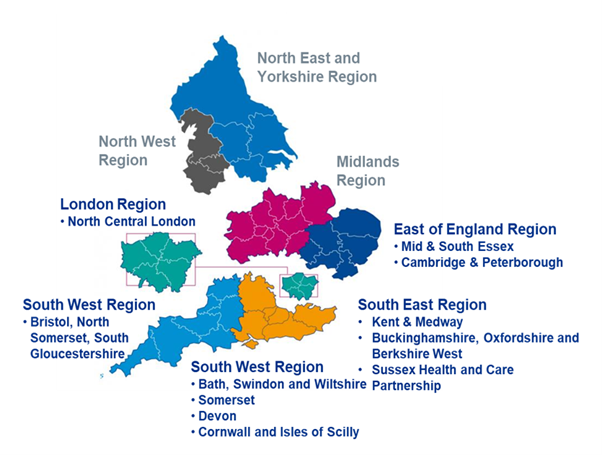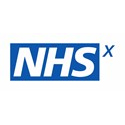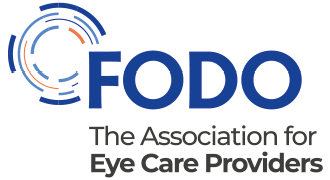04 June 2021
NHSX update

Eye care electronic referral management and image sharing
Programme update, May 2021
Background
This update to primary care stakeholders provides an overview of the context and current status of the eye care electronic referral systems (EeRS) management and image sharing (EeRS) programme. It also provides a short update on the support available to local primary care optometry for EeRS.
Why EeRS?
The EeRS programme was jointly commissioned by NHS England and NHS Improvement and NHSX in November 2020, with the primary objective of delivering two fundamental digital capabilities for eye care: electronic referral management and image sharing. This was in response to consistent requests by primary and secondary care stakeholders for these tools to support pathway transformation.
Benefits
The implementation of EeRS will support the NHS with the continuation of eye care services following the COVID-19 pandemic response. The EeRS programme will transform how services are delivered in the future to benefit patients by:
- enabling primary eye care clinicians to send electronic referrals directly and receive consistent feedback from hospital eye services
- supporting secondary care services to manage referrals and patient care more efficiently
- allowing the sharing of images and clinical findings including full volumetric OCT where required
- supporting the development and strengthening of shared care pathways across primary, community and secondary eye care services
- providing optometric referral data to commissioners of eye care services
Some of these benefits are instantly achievable, but others will follow through service transformation as new models of care are commissioned. The implementation of EeRS will make it easier for clinical teams to review diagnostics undertaken along the clinical pathway. Optometrists and patients will be able to receive feedback on referrals and advice from specialty ophthalmology teams remotely, meaning patients can benefit from improved access to specialist advice, in the community, where possible.
EeRS will directly improve the quality of referrals too. Being able to share clinical eye care information and images of the eye directly and securely will ensure that referrals are accurate and in real-time. Optometrists will be able to refer, and request advice and guidance directly from, ophthalmology teams (where locally commissioned), without the patient having to go into hospital. This will mean patients can be referred more quickly and efficiently, leading to a reduction in hospital eye service attendances where care is being delivered in the community.
Optometry is a key partner in this endeavour. The EeRS programme acts as the digital enabler, supporting a future integrated primary care offer for long-term, sustainable eye care recovery and transformation.
EeRS progress update
EeRS is a 'system led' programme, with regions and integrated care systems (ICSs) defining the system requirements and leading implementation. All seven NHS England and NHS Improvement regions are engaged in work to deploy and implement EeRS across their local eye care services. Four regions have already signed contracts with five suppliers to deliver EeRS across their relative ICSs, and procurement for the remaining three regions is imminent (see fig.1 below)

Fig.1. Integrated care systems implementing EeRS.
Implementation planning is well underway across all seven regions. We are collectively working to deploy EeRS to a series of early adopter sites to test and iterate the use of electronic referral management and image sharing between optometrists and ophthalmologists by June 2021. This is ahead of scaling implementation across individual ICSs throughout the remainder of 2021.
Local Optical Committees and Local Eye Health Networks (where they are in place), have been identified as important implementation delivery partners within each ICS and NHS England and NHS Improvement region. In addition, optical practices and acute hospital providers are being identified within each ICS to participate in the early adopter phase.
What EeRS support is available for local primary care optometry?
There are three main areas where EeRS support is provided for local primary care optometry:
1. Implementing business change: NHSX has commissioned NHS Digital to provide business change expertise to each NHS England and NHS Improvement region and the associated ICSs. These digital change experts will be actively working with local systems, including Local Optical Committees and Local Eye Health Networks (where they are in place) to ensure EeRS is implemented smoothly, based on local requirements and commissioned pathways. This supplements existing local resources and the capability delivered by the EeRS system suppliers.
NHS England and NHS Improvement is also actively exploring what resources it can provide directly to Local Optical Committees to support the adoption of EeRS and the objectives of the wider National Eye Care Recovery and Transformation programme, as well as strengthen the optometry profession through Local Optical Committees.
2. Technical architecture and standards: NHSX has commissioned NHS Digital to deliver an information standard for referrals in eye care. This information standard will support the routine processing of clinical data between practice management systems used in optical practices and referral management and image sharing systems. Phase one of the standard will initially capture a core minimum data set to support electronic referrals by August 2021. As electronic referral management and image sharing matures, we will develop and refine the standard to meet any further integration requirements that emerge..
When the EeRS programme was being set up, primary care stakeholders referenced 'double keying' clinical data as the greatest risk to EeRS adoption and attributed similar risk to the effort required for optical multiples and large providers to integrate with several EeRS systems. In response to these risks, we will be developing a common API standard and data model to minimise 'double keying' and support integration of systems in primary care. All of these will help to reduce the time it takes to send a referral.
3. Integrated primary care offer: The National Eye Care Recovery and Transformation programme is leading on the definition of an integrated primary care offer which uses an 'optometry first' operating model for eye care. EeRS will deliver two of the core digital capabilities required to support this integrated primary care vision. The associated funding models and service design discussions are not being managed through the EeRS programme itself.
Next steps
The focus for the EeRS programme is now on implementation across four of the seven NHS England and NHS Improvement regions, with the three remaining regions undertaking a procurement exercise to support rapid adoption from July 2021. Continued, active, two-way engagement with Local Optical Committees and Local Eye Health Networks (where they are in place) is integral to this process as we implement business change and define information standards that will support long-term, sustainable recovery and transformation of eye care services.
If you would like to engage with our team around our work on eye care digital transformation, whether about EeRS or the wider National Eye Care Recovery and Transformation programme, please follow our monthly updates in your local LOC's newsletter, or visit this page.
Source: NHSX 28 May 2021

Stay up to date
Subscribe to
our newsletter
Get eye sector updates directly to your email inbox by signing up to our newsletter.
You can inform us at any time if you'd like us to stop sending you these communications.
Press enquiries
Media enquiries should be directed to [email protected] or call 020 7298 5151.
We are happy to put you in touch with our expert policy advisers who can comment on a variety of issues.

 Patients and public
Patients and public
 Policymakers
Policymakers
 Members
Members News and views
News and views
